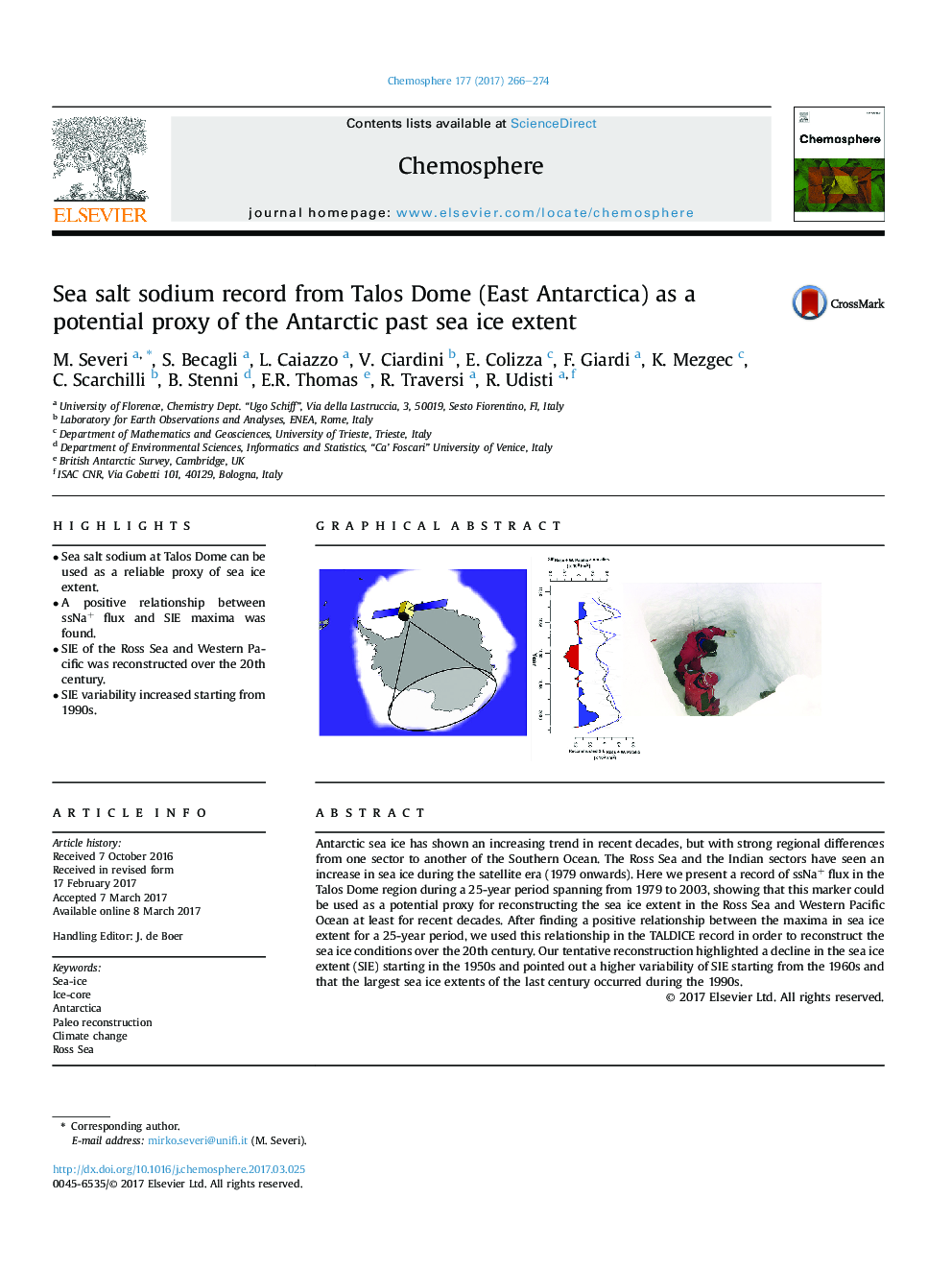| کد مقاله | کد نشریه | سال انتشار | مقاله انگلیسی | نسخه تمام متن |
|---|---|---|---|---|
| 5746318 | 1618794 | 2017 | 9 صفحه PDF | دانلود رایگان |
- Sea salt sodium at Talos Dome can be used as a reliable proxy of sea ice extent.
- A positive relationship between ssNa+ flux and SIE maxima was found.
- SIE of the Ross Sea and Western Pacific was reconstructed over the 20th century.
- SIE variability increased starting from 1990s.
Antarctic sea ice has shown an increasing trend in recent decades, but with strong regional differences from one sector to another of the Southern Ocean. The Ross Sea and the Indian sectors have seen an increase in sea ice during the satellite era (1979 onwards). Here we present a record of ssNa+ flux in the Talos Dome region during a 25-year period spanning from 1979 to 2003, showing that this marker could be used as a potential proxy for reconstructing the sea ice extent in the Ross Sea and Western Pacific Ocean at least for recent decades. After finding a positive relationship between the maxima in sea ice extent for a 25-year period, we used this relationship in the TALDICE record in order to reconstruct the sea ice conditions over the 20th century. Our tentative reconstruction highlighted a decline in the sea ice extent (SIE) starting in the 1950s and pointed out a higher variability of SIE starting from the 1960s and that the largest sea ice extents of the last century occurred during the 1990s.
224
Journal: Chemosphere - Volume 177, June 2017, Pages 266-274
